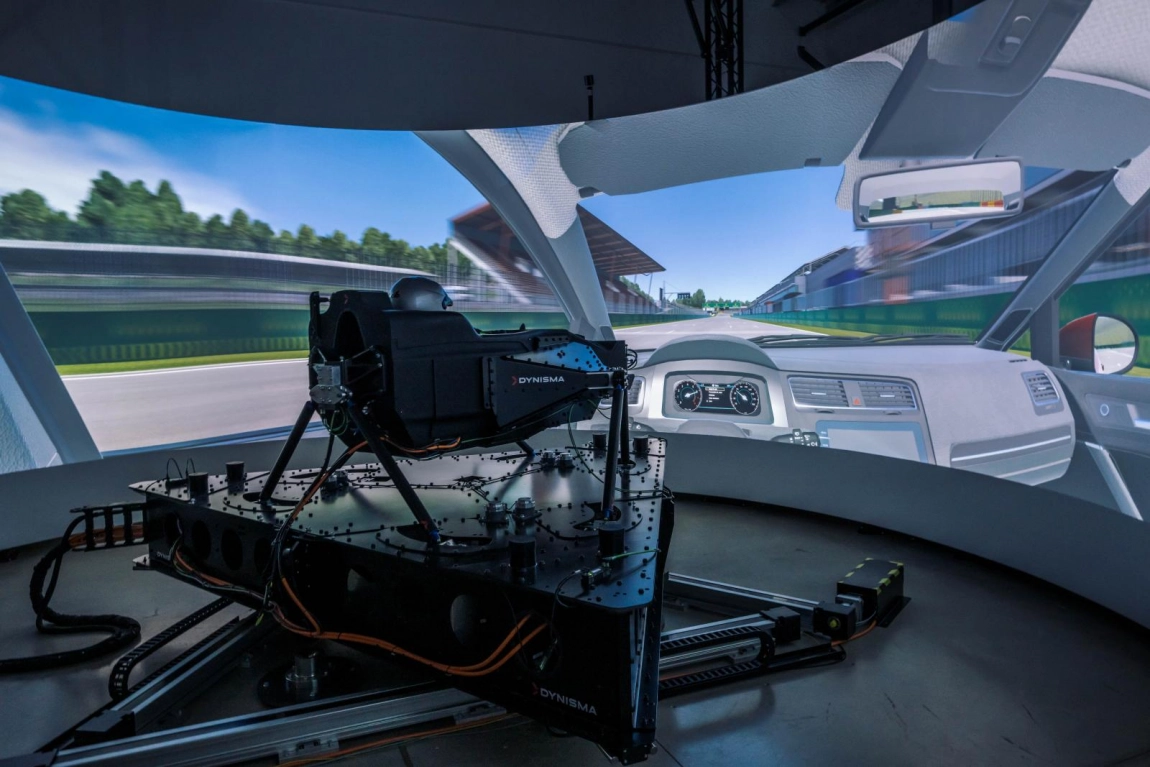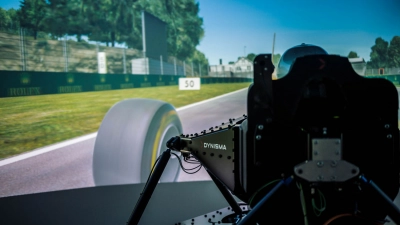
DON'T GET LEFT BEHIND IN ADOPTING A GENERATIONAL LEAP FORWARD IN DRIVING SIMULATION TECHNOLOGY
By Ash Warne
At Dynisma, our driving simulation roots may have come from the fast-paced world of top-level motorsport – but when it comes to competition, an even fiercer race is taking place between leading automotive OEMs.
Whether a brand is an established player or EV start-up, time is not a luxury any vehicle developer has. Impending legislation banning the sales of ICE, fear of being left behind by rivals and customer demand for tomorrow's technology today, is creating a need to bring new products to market as swiftly as possible.
In turn this is resulting in a fundamental rethink of the way an OEM designs a new vehicle. Speed is of the essence – and driver-in-the-loop simulators lie at the very heart of the matter.
By no means a new development tool, OEMs have been employing sims for many years. Indeed, a large brand may have multiple driving simulators – well into double figures in some cases – with each one optimised to cover different areas of development and use cases.
What is changing is the capability of a sim, enabling a car company to do things it has never done before, slashing development time, cost and with ongoing supply chain issues delaying the creation of physical prototypes, also risk. Not to mention creating better products too.
NVH and ride: where a driving simulator can pay huge dividends
One of the biggest areas where Dynisma’s range of simulators offer a quantum leap is at the intersection between ride quality evaluation and noise, vibration, and harshness (NVH).
Until now, no other vehicle dynamics simulator has enabled automotive engineers to effectively develop a car digitally in these two areas; it has had to be done physically, which brings cost and adds time.
What makes our sim a cut above the rest? Well, our DMG system can provide feedback to the test driver within three-to-five milliseconds: literally an order of magnitude less than some of the competition. We call that latency, and no other simulator comes close.
The next benefit is being able to provide the full range of frequency content that would be experienced in the real vehicle. While a lot of simulators cover a range of 15 to 20 Hz, which can capture the natural body modes of the car itself, it’s not enough, because what gets overlooked is the amount of high frequency content which, while attenuated by the suspension, does pass through it to the body and the driver.
Dynisma’s driver-in-the-loop simulators provide accurate motion up to 100 Hz, well into the human auditory range, providing important cues for NVH.
How accurately can a Dynisma simulator model ride quality?
If a test driver runs over a cat’s eye – an event whose duration may be less than 20 milliseconds at the wheel – our simulator can deliver the correct short, sharp jolt that’s so crucial to evaluating ride.
A lot of simulators tend to be constantly correcting motion errors, and there’s often a degree of mechanical noise as well. The result is a ride that transitions between uncannily lifeless and unrealistically harsh. We’ve worked very carefully on our control strategy and our mechanical design to give a smoother, more organic feel. As many test drivers describe: “it just feels like a real car”.
As a result, experienced ride and handling engineers who are developing a road car can finally get the accurate feedback they require, because we can simulate the full frequency range that an OEM is focusing on.
When it comes to EV development, this is all crucial. In taking away the engine and its inherent NVH signature, EV developers have created a new reference for NVH impressions, in which things that were previously drowned out may become disturbing or even obtrusive. Added to that is a substantial increase in vehicle weight as well as changes to the architecture and tyre behaviour. As a result, there is a new science around re-optimising ride and NVH.
What does all this mean for overall vehicle development?
Well, because our simulator allows engineers to carry out much more development in the virtual world, an OEM can dramatically delay the point at which it needs to build expensive prototype vehicles. Optimising ride and NVH digitally is just one example - there are many other development disciplines.
With some new car development programmes requiring up to 100 different prototypes, each of which can come with a six or seven-figure price tag, it doesn’t take long for a simulator to pay for itself.
But that then leads on to another key decision. With vehicle programs typically taking 3 – 5 years, manufacturers who aren’t already factoring the very latest driving simulator technology into their development need to do so now – or risk being left behind.
By enabling an OEM to carry out more development than ever before in the digital world –providing complete repeatability, total safety, not to mention significant cost savings – a simulator is vital to the engineering process, and the wonderful thing is that we’ve not even scratched the surface of what our technology can do. The race is on.

